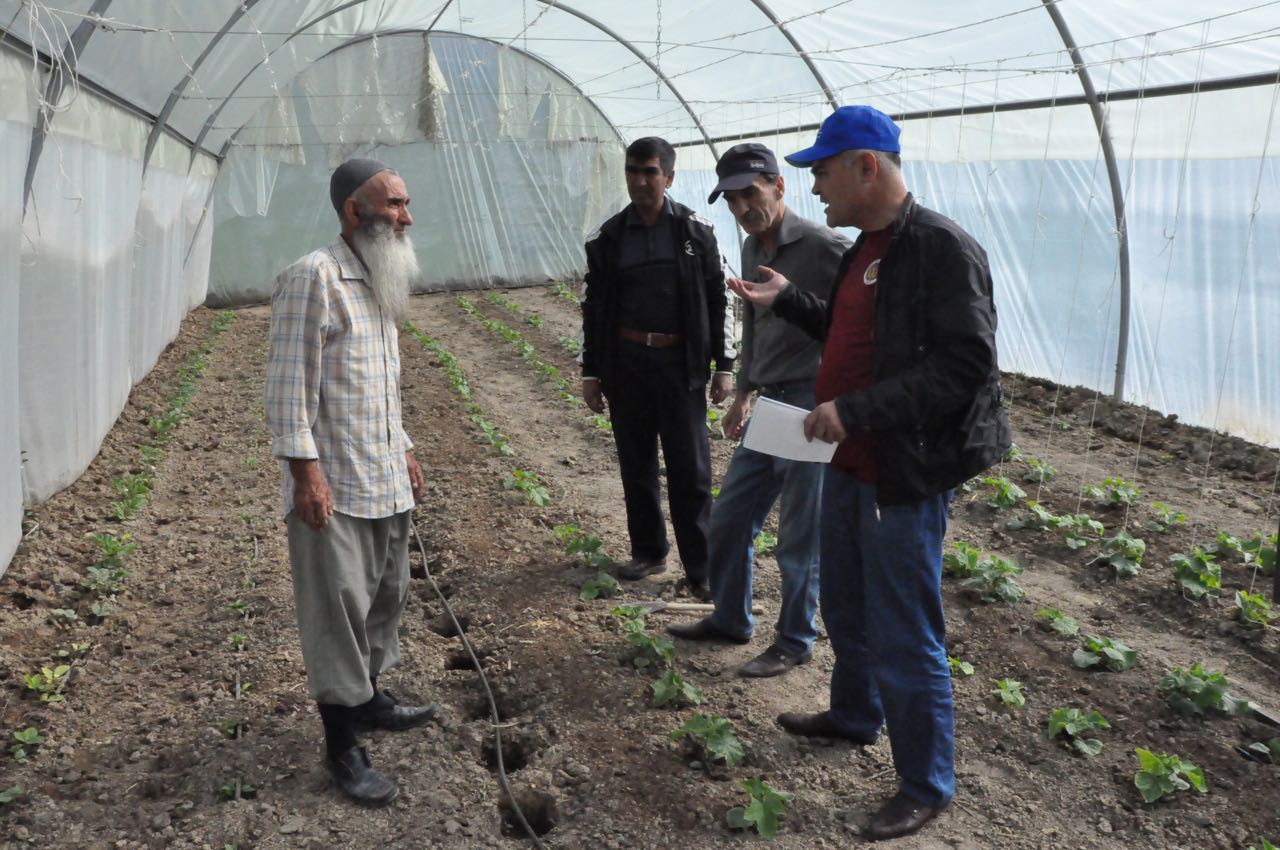

À Konegummez, la disponibilité de terres fertiles est limitée. Les agriculteurs cultivent des légumes, tels que des tomates, des carottes, des choux ou des pommes de terre. Presque toutes les familles possèdent des arbres fruitiers, par exemple des pommiers, des abricotiers, des noyers et des amandiers. Les récoltes servent d'abord à la consommation familiale et le surplus est stocké pour l'hiver.
En 2014, les agriculteurs locaux, avec le soutien d'un projet, ont construit la première serre (90 m²). Le chef et l'ancien du village ont été nommés responsables de la gestion de la serre. L'objectif de la construction de cette serre était de former les agriculteurs locaux et de s'adapter ainsi aux impacts négatifs du changement climatique. L'année suivante, trois autres serres ont été construites par les agriculteurs eux-mêmes.
Sur un terrain loué de 33 ha, les agriculteurs cultivent des arbres fruitiers et des légumes. Plus de la moitié de la récolte est vendue. La parcelle est irriguée au goutte-à-goutte, ce qui garantit une très faible consommation d'eau.
Sur des champs pluviaux loués individuellement, les agriculteurs cultivent du blé sur ordre du gouvernement. Sur ces parcelles, le revenu agricole dépend du niveau des précipitations et varie donc fortement d'une année à l'autre.
En général, au cours des 15 dernières années, les familles d'agriculteurs ont considérablement diversifié leur production agricole et l'ont rendue plus résistante aux effets négatifs du changement climatique.
Le soutien initial d'un projet de développement international pour la serre a été très utile pour fournir une technologie innovante dans ce domaine. La gestion de la serre, qui a fait ses preuves, ainsi que les nouvelles formes de légumes, ont été des facteurs très importants pour que les agriculteurs fassent confiance à la nouvelle technologie. La vente réussie de légumes et de fruits sur les marchés voisins est une motivation importante pour les familles d'agriculteurs.
La diversification de la production agricole à plus grande échelle (en l'occurrence au niveau du village) dépend de la volonté des gens d'essayer quelque chose de nouveau. Dans le cas de Konegummez, l'ancien et le chef du village ont joué le rôle d'"innovateur". Ce fait a permis de combiner deux facteurs de réussite : (1) la volonté d'essayer de nouvelles choses et (2) le fait d'avoir une personne comme "innovateur" qui est socialement acceptée, encore mieux dans une position hiérarchique plus élevée, comme dans ce cas le chef.
Pour les innovations coûteuses, comme la serre, il semble également important qu'un acteur, dans ce cas le projet de développement international, qui peut fournir des ressources financières, prenne le risque lié à un éventuel échec. Cela contribue de manière significative à ce que les agriculteurs pauvres s'engagent dans des technologies innovantes.